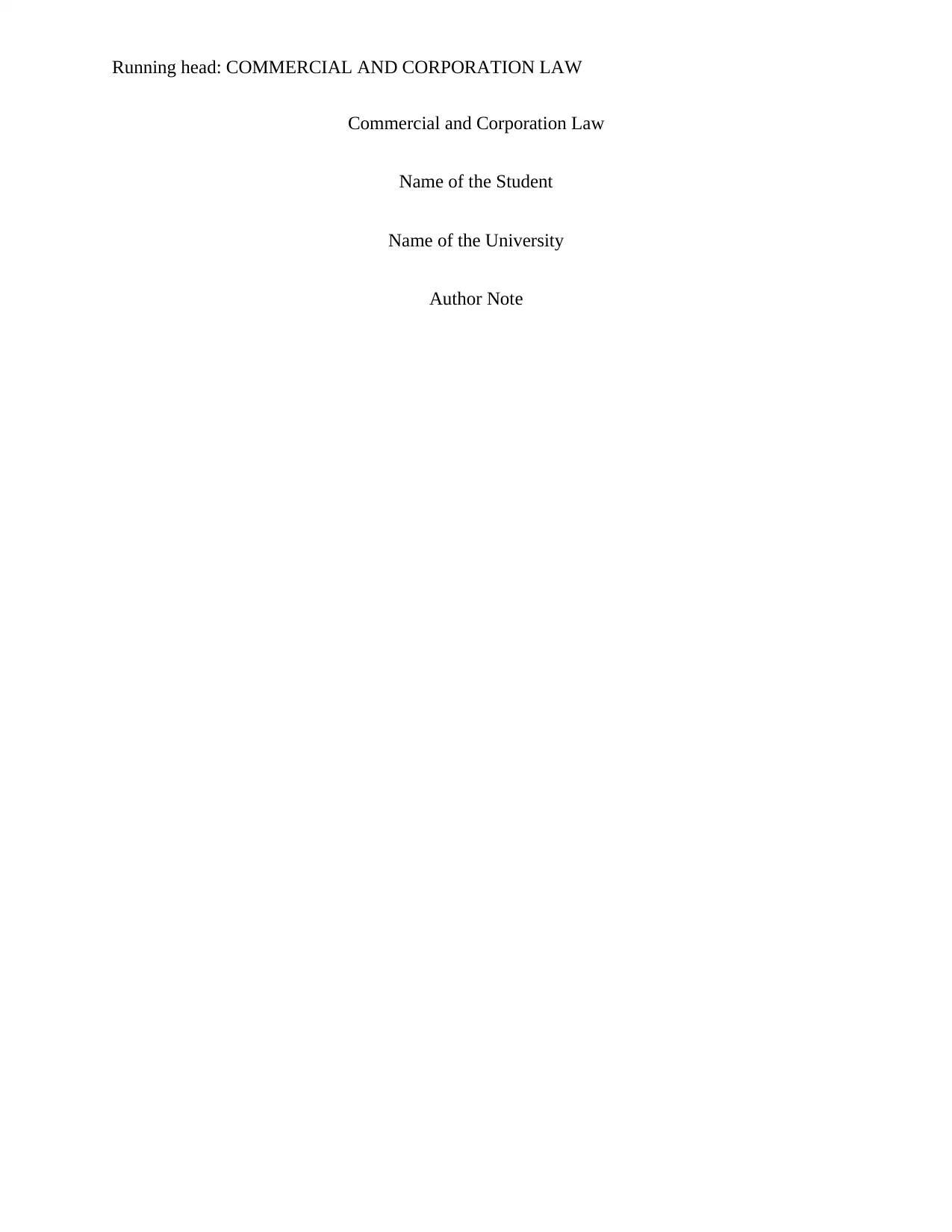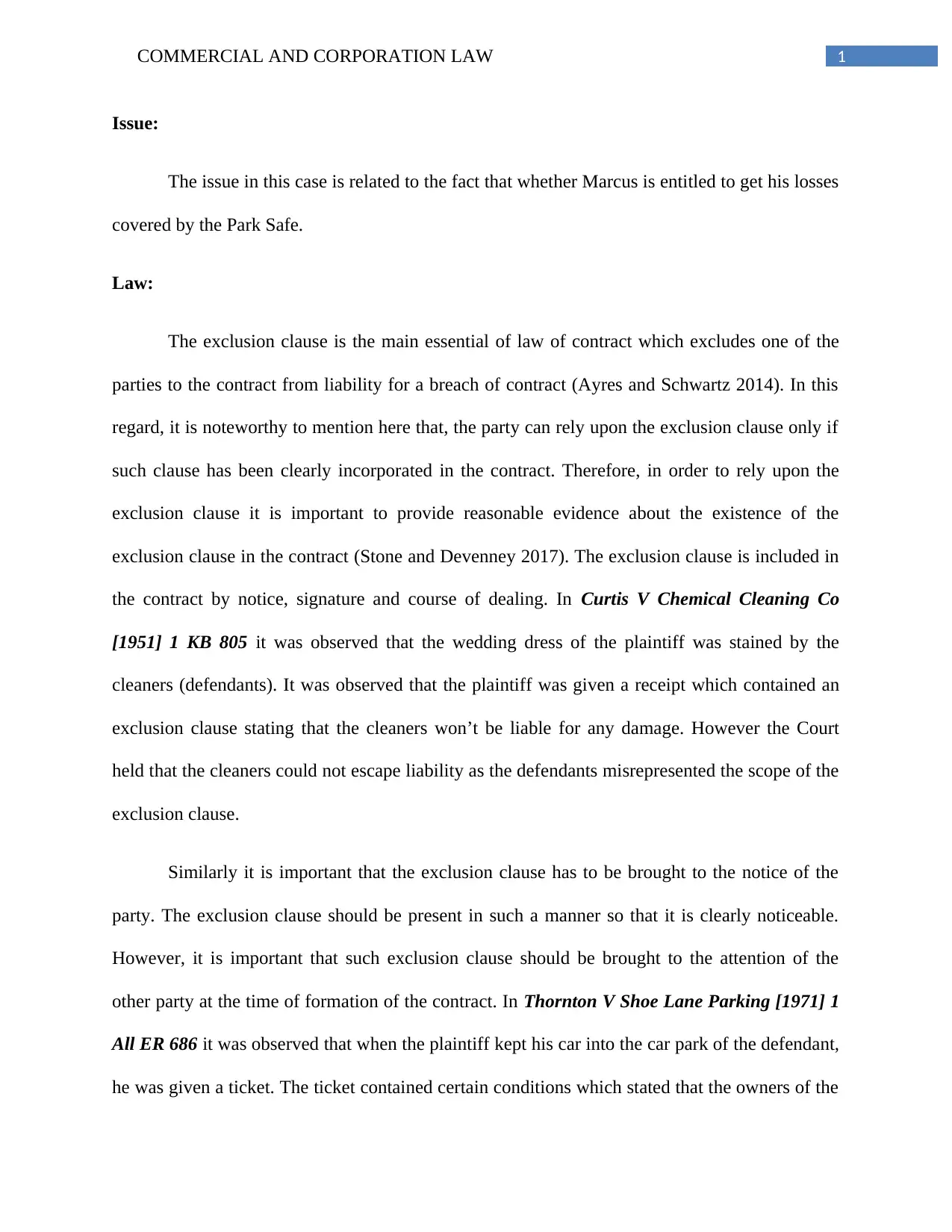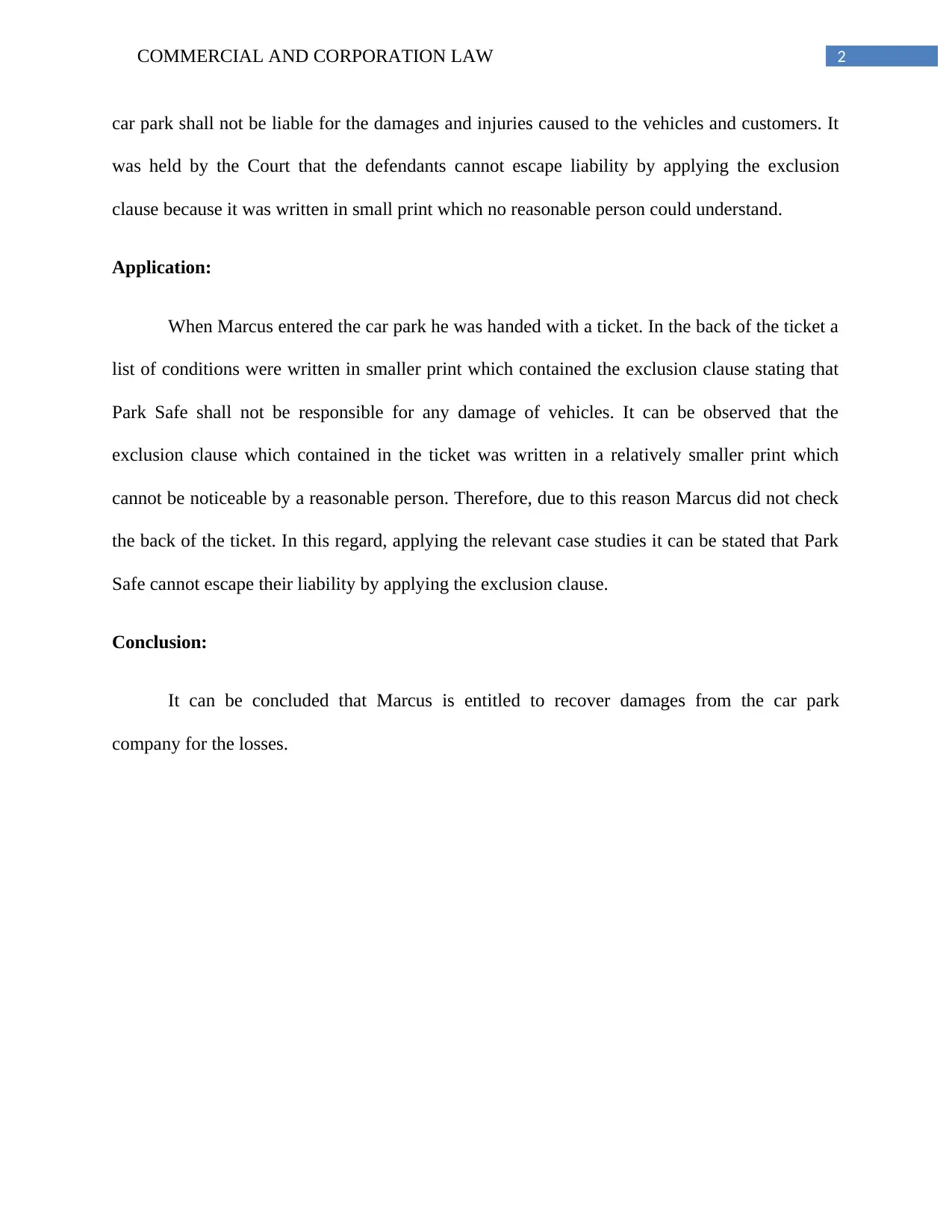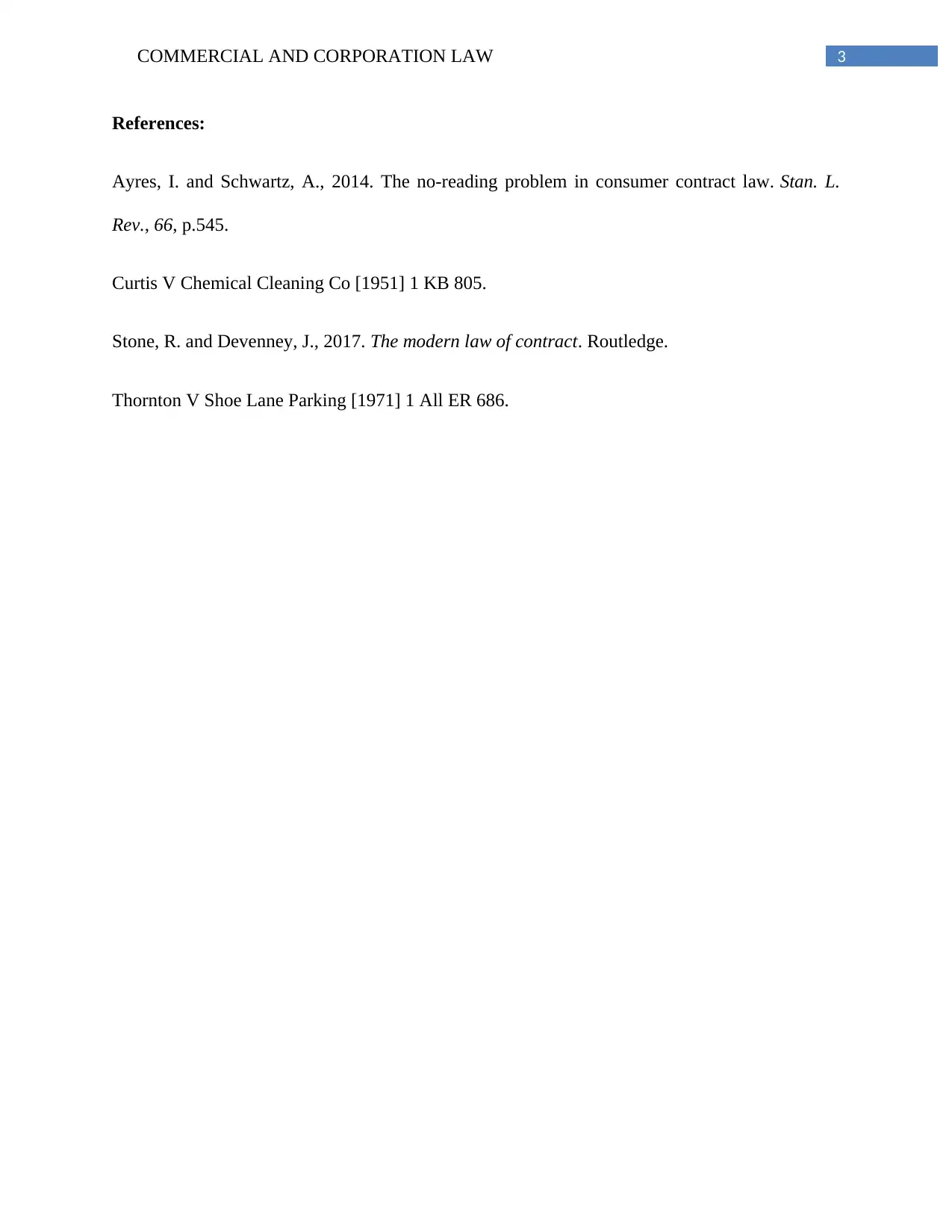Commercial Law: Analyzing Exclusion Clauses in Contract Law Cases
VerifiedAdded on 2020/05/11
|4
|633
|47
Case Study
AI Summary
This case study analyzes a commercial law scenario involving an exclusion clause in a parking contract. The assignment begins with a brief overview of the issue, which is whether Marcus can recover his losses from the car park company (Park Safe). The legal background focuses on the exclusion clause, highlighting its role in limiting liability within contracts. Key legal principles, such as the requirement for clear incorporation of the exclusion clause and its visibility to the contracting parties, are discussed. Relevant case law, including Curtis V Chemical Cleaning Co and Thornton V Shoe Lane Parking, is used to illustrate the application of these principles. The application section applies these legal principles to the facts of the case, emphasizing that the exclusion clause was written in small print, and therefore, not easily noticeable. The conclusion states that Marcus is entitled to recover damages because Park Safe cannot rely on the exclusion clause to avoid liability. The document concludes with a list of cited references including academic journals and case law.
1 out of 4











![[object Object]](/_next/static/media/star-bottom.7253800d.svg)